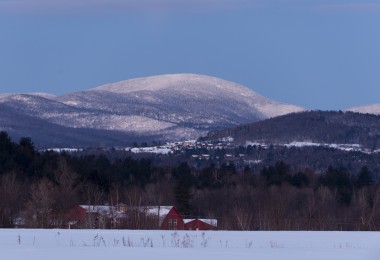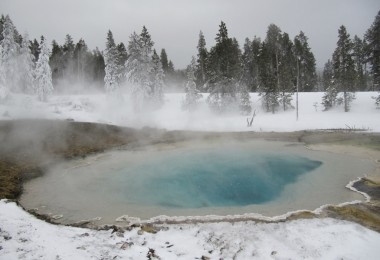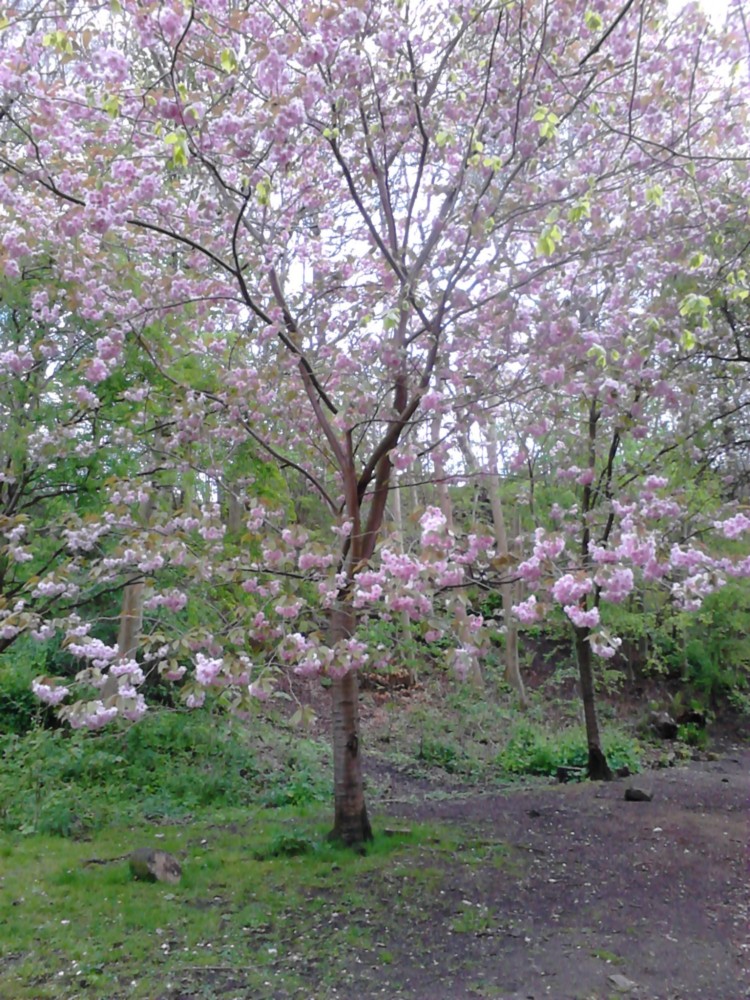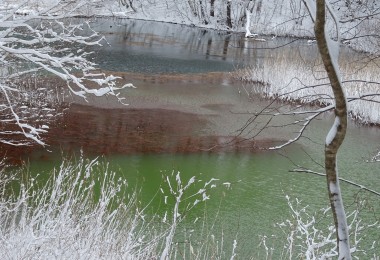There is a new small park along the Minnesota River valley on the south side of Eden Prairie called Richard T Anderson Park, named after a former Eden Prairie City Councilman who cared deeply about the environment. Eden Prairie has developed very rapidly over the past 20 years, from a semi-rural area of 20,000 with many active farms and horse ranches to a full-fledged suburb of 60,000 residents. In part, because of Mr. Anderson, Eden Prairie currently has 28 parks.
As you may well imagine located as it is along the Minnesota River, Richard T Anderson park (or “RTA” as it is called by a certain population of users…I’ll get to that in a minute) is a park that starts with a parking lot alongside highway 212 to its south and immediately ascends into bluff country to the north. Looking to the south, highway 212 skirts the park’s southern boundary and on the other side of that highway there is a marshy lake called Rice Lake and a series of marshes and floodplain surrounding the slow Minnesota River. This Minnesota River Valley is a major travel route for migratory birds of all sorts, Canadian geese, ducks, and noticeably eagles and other raptors. The eagles hang above moving with slight movements of their wingtips catching the updraft of winds rising out of the valley and cruising this bluff line bisected by gullies where the river curves east-west.
The character of the park’s landscape varies from gully to gulley depending on the predominant type of tree and angle of the gully to the sun – in some cases, the deep gullies carving out the bluffs are filled with tall poplars and the gulley is cool and deep. In other gullies, where majestic oaks dominate, there is an openness to the mid-canopy where the light that reaches the ground passes through the curving arms of these ancient trees.
In a nearby shallower gulley the scrub pines clump together clinging to sharp embankments. At the top of the bluff the black remnants of lightening blasted pine lay among the long grasses and north facing beds of moss. In still others, where the bluff-side slopes sharply down in a broad face raised to the arc of the sun’s path, long tawny grasses are predominant. In the summer time, the winds gently buffet these grassy knolls like invisible brushes pulling through blonde hair. When the first truly warm days of early summer move the ground temperature up into the 50-60 degree mark the morel mushrooms pop up throughout the sun exposed areas.
Wintertime
In the wintertime, this same divergent landscape slips under a uniform blanket of snow and loses some of its individuality. This winter there was plenty of snow at RTA. As I have in the past few years, I spent some time snowshoe running. For myself, and the others who do this kind of thing, RTA was the place to be this winter. Heading directly east out of the parking lot across a flattened field, snow blankets the grass. The trail is perpendicular to the highway, but gradually diverges north and eventually, up. Finally, the shuffling crunch, crunch, crunch of aluminum crampons on ice-encrusted snow across the field gives way to a hands-on-thighs push up the bluff side. The face of the landscape is open here and the trees are scrub pine covered with snow. Blobs of snow cover every branch. The trail in wintertime is best for those with snowshoes.
Even on a sun-facing southern exposure, the amount of snow this winter makes this part of the park almost impassable, except for those with snowshoes. You push through the scrub pine branches, essentially weaving yourself through, like a warm mammalian needle of huffing breath threading yourself through a forest of motionless white-covered pine statues. As you make your way up the bluff its best to curve with the natural contours of the slope as it levels out slightly and then sharply ascends, etching a snowy footprint upward. At the top eastern edge of the park’s bluff line the polar trees rise over the top of the narrow top like hands coming together in prayer and enclose you. If you look behind you to the south, the Minnesota River Valley lays out flat and white interspersed with stubborn stands of water-loving willows and pines tilting in the soft floodplain.
Heading west along the top of the bluff line the trail dips back down and across a mantle of snow covering a grassy knoll cut by minor gullies and then falls away into a full valley mixed with oak, poplar, and pine before curving north. Here, the trail moves along the bottom of a steep gulley with a stream at its bottom. It is cool and quiet here, a gully within a larger gulley spreading north and west, where the land has been carved by springtime streams over thousands of years. Here is where you can imagine wolverines flattened out on tree limbs waiting for deer to pass beneath. Waiting, watching, where steep slopes make paths tight.
The stream is at the bottom of a four foot drop and large downed trees make natural bridges headed west. Here in this flattened area, the larger gulley forms a bowl with slopes to the east, north and west. The trees are huge here, protected from wind and storm. There are giant oaks slightly uphill and fast-growing and water-loving cottonwoods towering high over stretches of green, segmented horsehair grass alongside the stream.
In the wintertime, the trails diverge in all directions here. The bowl seems to pull you into itself. There are no particular markers that stand out. No natural targets, like a group of trees to walk to. It seems that if you head towards a gulley carved into the larger bowl you often find yourself headed into a gully of the smaller gully itself and in turn another gulley where the sun and an orientation to the west-east flowing Minnesota River is blocked from view. The snow is deeper here. There are fewer paths, and then, none at all — only gullies and more gullies, slopes, streams, some rushing, some languid. The poplar trees thrive here as do the oaks. You can imagine loggers bypassing the area a 100 years ago knowing that to pull trees off the slopes and through gullies and more gullies and finally into the open areas hardly worth the effort.
There are ancient, quiet areas here. There are places where the snow is up to your hips and others where snow is shallow and your snowshoes churn up the top layer of the autumn blanket of leaves. If you head up a gully to its top you can catch glimpses of the break in the larger bowl to the south where the streams converge to dump into the Minnesota River. As you move up a slope the temperature rises as the cooler air and quiet of the gulley bottom falls away.
One way to move out of the bowl is to continually take a “right” and simply run along the bowl’s midriff to get to the open southern side. By contrast, heading straight along the bottom of the bowl where it flattens out and is cut by streams is missing something. There is a certain feeling of lightness, almost anti-gravitational running along the inside of the bowl, as if each footfall gradually headed upwards is buoyant. By working along the midriff you can gracefully curve upwards and to the south where you come out at the top of the western highest tip of the park’s bluff line.
There, the top of the very steep southern bluff is bare and exposed. The view to the south is again the expanse of the Minnesota River Valley, except without any trees blocking your view. Six or seven miles to the west you can see the steeples of the city of Shakopee churches and scanning to the east you can see the far distance bluffs from when 10,000 years ago the much larger water flow of the Minnesota River Valley carried the last deluges of the glaciers retreat.
Here, at this expanse and this resting place is where I’d like to look over and say, “Hey, you see this bit of dried Russian sage brush?”
It grows in small clumps near the grassy knolls in wintertime — a cold mass of curled leaves and twig poking above the snow pack. Cup your hands around the sage and with a lighter touch a flame to it. This fleeting orange glow and waft of sage is my prayer for you and yours.






Leave a Comment